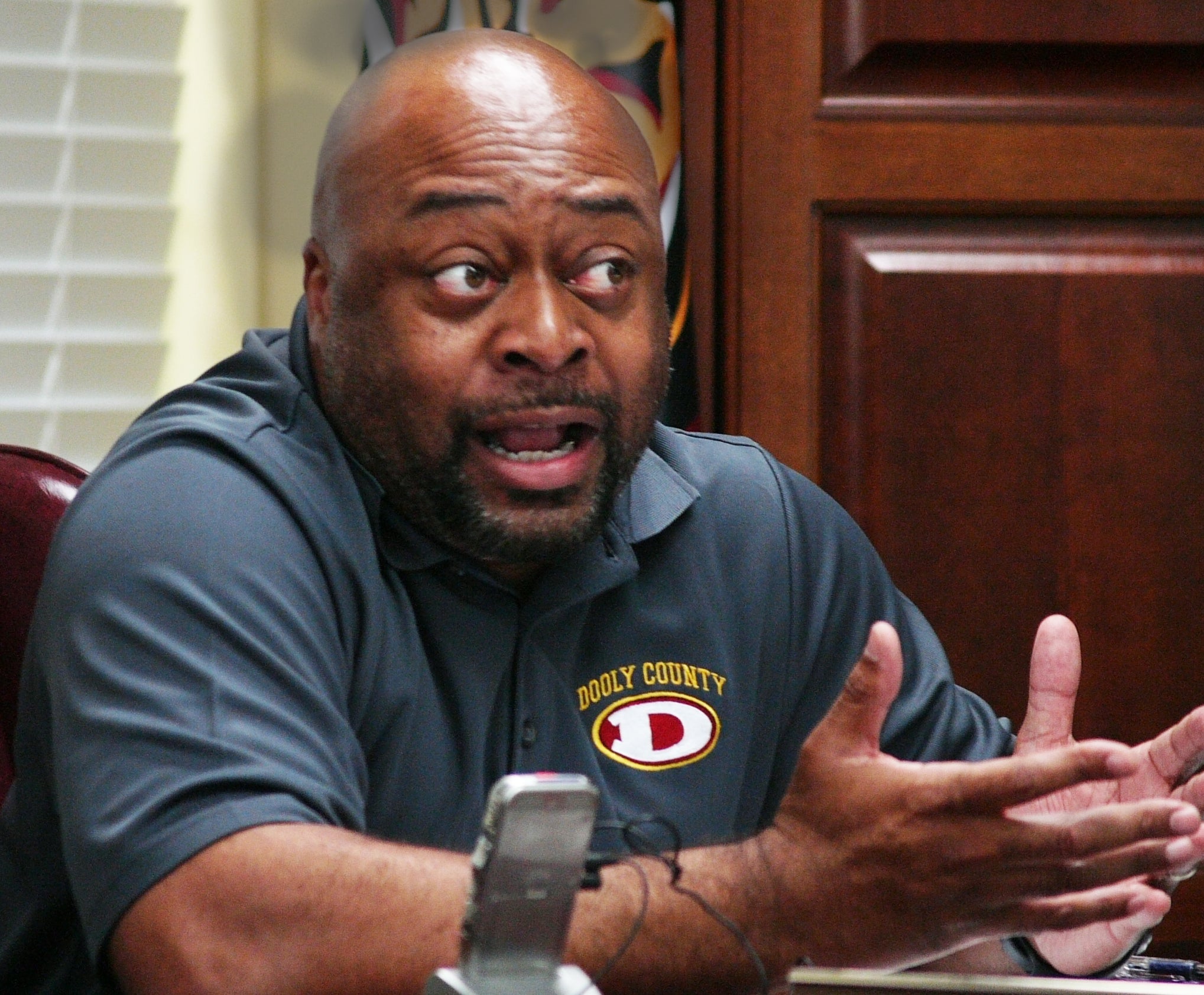COVID impacts 2021-22 Dooly education budget
Published 3:55 pm Thursday, June 10, 2021
|
Getting your Trinity Audio player ready...
|

Dooly County Superintendent Craig Lockhart gives his thoughts on the 2021-22 budget. Photo by Neil McGahee
Government school relief funding opening new doors to financial security
By Neil B. McGahee
Managing Editor
Dooly County Superintendent of Schools Dr. Craig Lockhart is fond of saying “This is Dooly; Headed to the Top!”
Although the county has made gains in its curricula and faculty, heading to the top has been a financial struggle. That may be all about to take a great leap forward, due in part to, of all things, the coronavirus pandemic.
“We are going to use the fund balance to offset the budget deficit,” Dooly Schools Chief Financial Officer Chris Godfrey said in her financial report. “We will use the CARES Act funds to offset the General Fund expenditures, plus there will be no change in the projected millage rate and salary increases for all staff.”
Indeed, the Coronavirus Aid, Relief and Economic Security (CARES) Act, sometimes referred to as the “third COVID-19 supplemental relief bill,” was signed into law on March 27, 2020 to provide economic relief to public school districts by allocating funding for afterschool and summer learning programs, student nutrition programs health support.
“We are now in a position,” Lockhart said, “to pay our staff an appropriate, competitive rate with neighboring counties and counties our size. But there comes expectations with that. We need to be sure everyone can perform at a high level in exchange for the compensation.
“This is one of the best budgets I have seen in a long time. There have been times where we had a very tight budget. Due to the pandemic, we are in a strong financial position, but we still have to monitor our spending and make sure we are good stewards of local tax dollars as well as the state and federal dollars. We are in a very good place to be able to support our students better than we have before.”
Lockhart said the system could receive up to $11 million.
“There was $800,000 in CARES1 money, $3.2 million in CARES2
and a little more than $7 million that came in CARES3, which is also referred to as Elementary and Secondary School Emergency Relief (ESSER),” he said. “It provides funding for each state, to support efforts to safely reopen K-12 schools.”
That announcement goes hand-in-hand with Department of Health and Human Services secretary Xavier Becerra’s announcement that the Centers for Disease Control and Prevention (CDC) will provide $10 billion to states to support COVID-19 screening testing for K-12 teachers, staff and students and meet President Joe Biden’s goal of safely reopening the majority of K-8 schools within the first 100 days of his administration.
“That money hasn’t officially arrived,” Lockhart said. “It has the most requirements that must be met, but when it does, it will be devoted to learning loss, afterschool programs, hiring more staff to reduce class sizes and Saturday and summer programs that may provide mental health support. Another use is socio-emotional support for children who really need emotional support.”
The tentative budget shows overall anticipated revenues from the general fund amount to $11,751,518 while expenditures totaled $11,967,794, a shortfall of $216,276. The board will vote to accept or reject the final budget on Thursday, June 17 at 6pm at the board headquarters,
Board chair Katrice Taylor said that although they are very appreciative of the CARES Act, the board had always taken strides to become financially stringent.
“Over the past two years,” she said. “We haven’t had to borrow money to cover payroll taxes. The CARES money just gives us a little wiggle room.“
Lockhart said that going back as far as the recession of 2008, a lot of school systems had to cut non-academic programs like the fine arts programs or vocational programs.
“We are now in a position to get those things back,” he said. “Our belief is that if we offer high quality programs, then parents will feel more confident about sending their children to school and we can add even more students.”
“You can never say enough bad things about COVID,” Lockhart said. “It has cost 600,000 American lives. We have a literacy gap and COVID actually made it worse. We are seeing 30 percent drops on average, then add in poverty and the pressure our students face makes it worse.
“We are working to make sure our students are prepared to go out
and meet the world,” he


